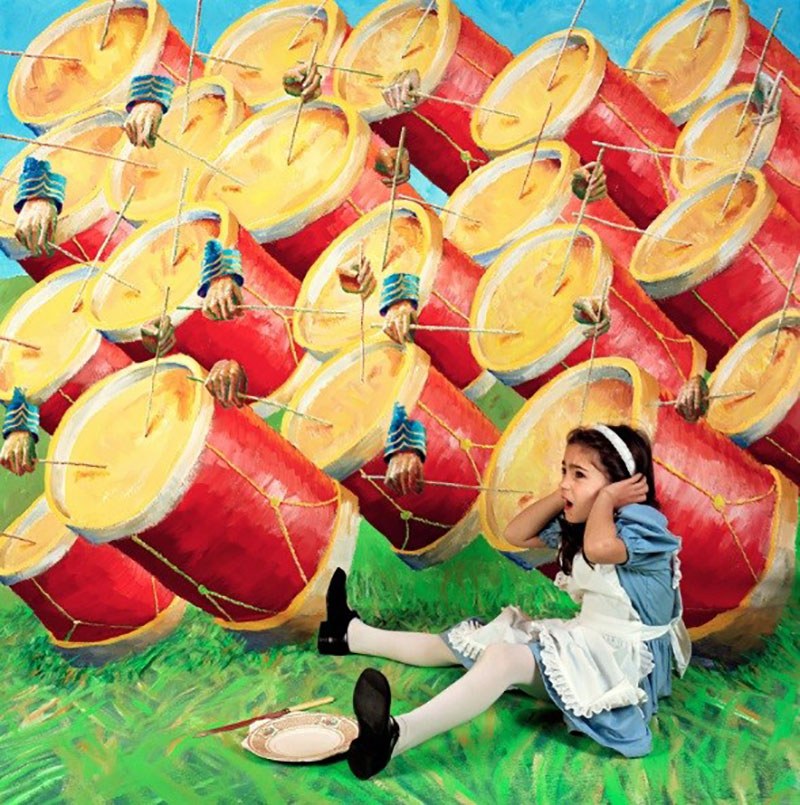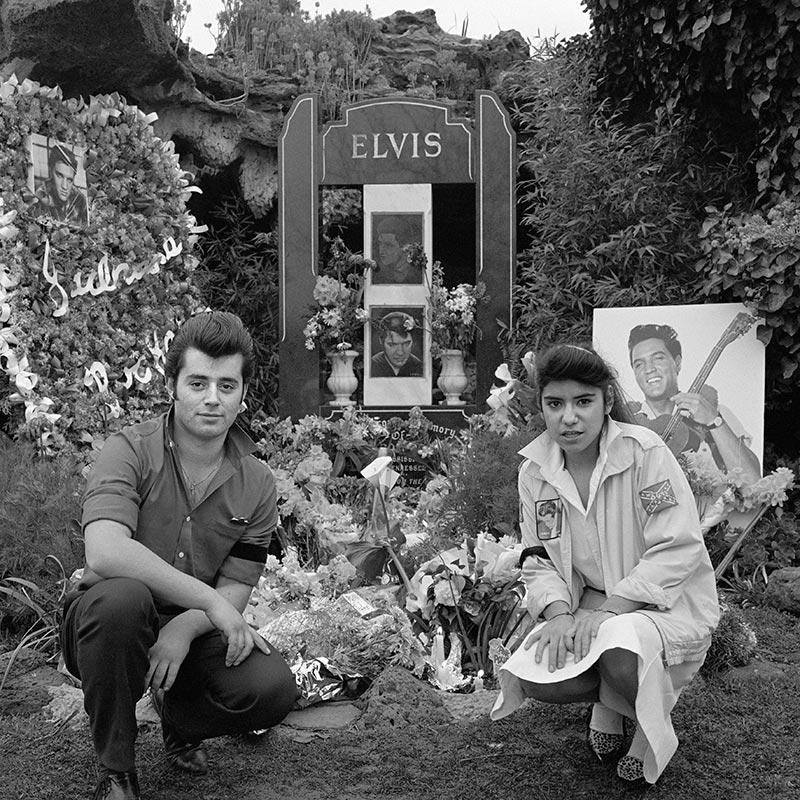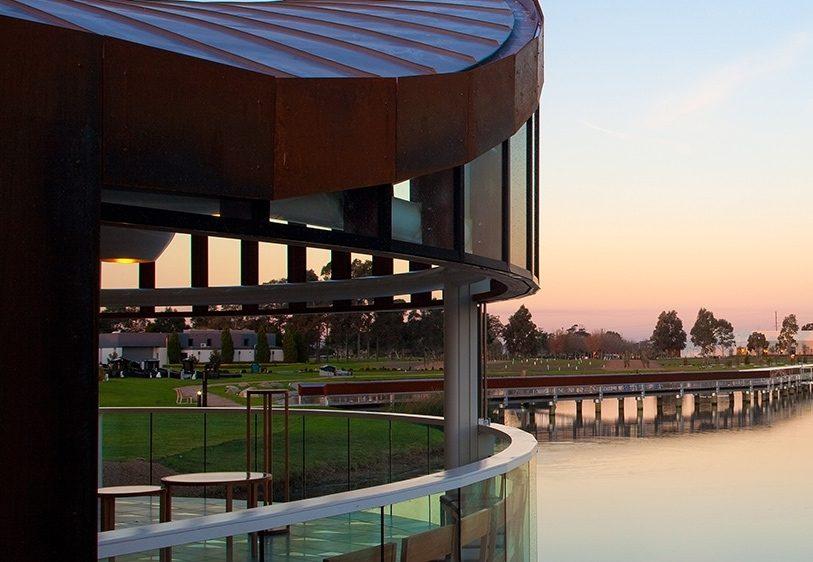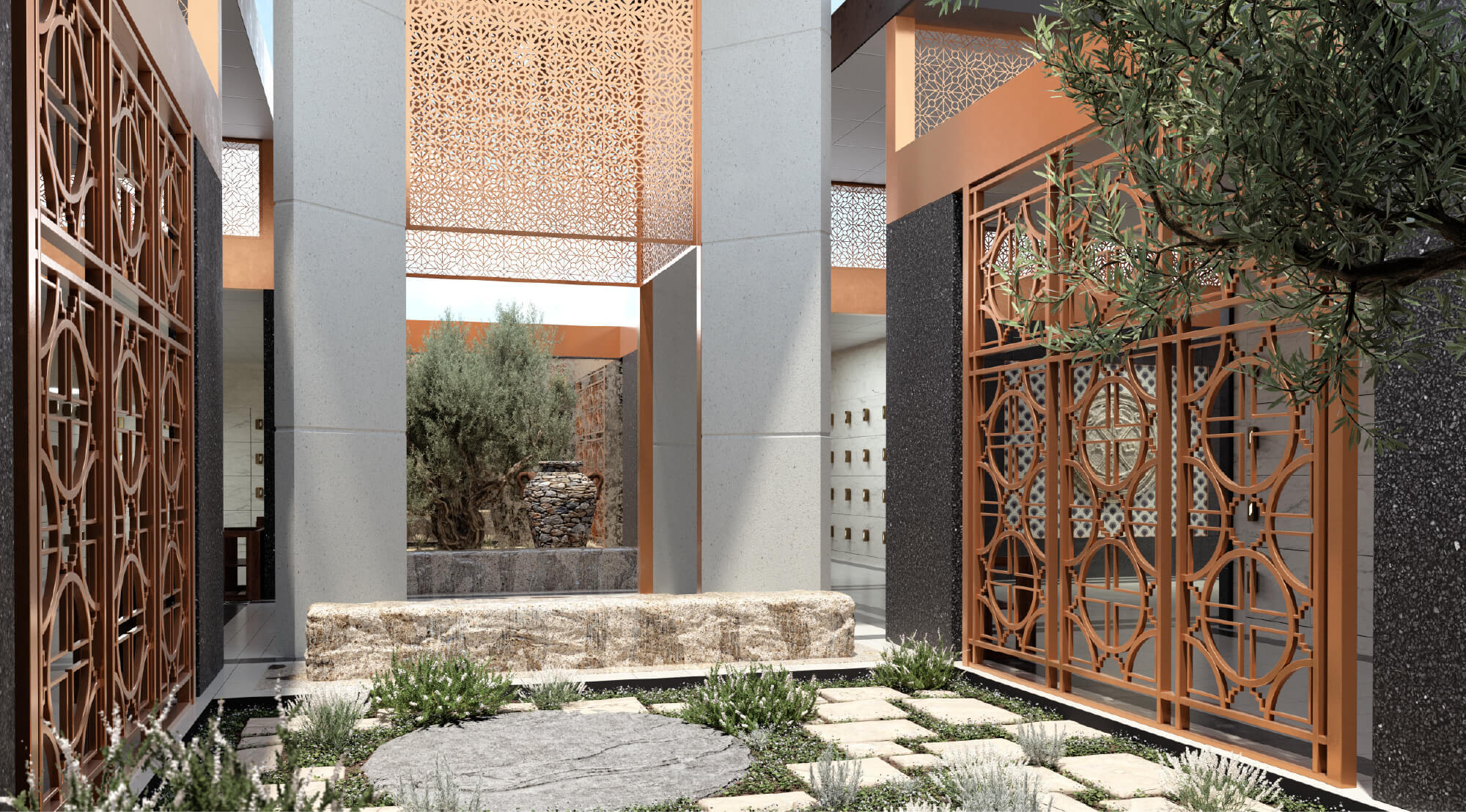Identifying Elvis (and a host of others): the work of Polixeni Papapetrou

Featured Image: Portrait of Polixeni Papapetrou and Lexie: © Robert Nelson
Polixeni Papapetrou is a Melbourne-based photographic artist who has various connections to Melbourne General Cemetery. Papapetrou’s talent weaves a body of work that ranges from intimate black and white portraiture, to dramatic outdoor scenes and fantastical imaginary sets of riotous colours. I was privileged to gain an insight into Papapetrou’s creative world, and learn that regardless of subject matter, identity remains key in every piece. Here she spends time discussing her passion for identity, why Melbourne General Cemetery has such a special significance, and how she captured a portrait of former Prime Minister Malcolm Fraser in just the right light, to create just the right moment.
Q1. You’ve come from a background in Law. Can you describe the time of your transition into becoming an artist?
I did not enter the art world straight from art school. Growing up as a child, I was not especially good at drawing and felt inadequate during art classes, so I focused on academic interests that came more naturally to me. After leaving school, I studied Law at Melbourne University and then began my professional working life as a lawyer, which I enjoyed for 15 years.
Before I describe the transition to Law I should add that something significant happened to me while I was a law student. It had never occurred to me that I could be an artist and I didn’t know anything about the art world. While I was a university student I met an artist, who asked me to model for him. I had never met an artist before. His studio had a number of books, but the one that became life changing for me was Diane Arbus’s, Monograph.

I can still picture myself picking up this book, leafing through it, and feeling shaken by the photographs. Not only could I relate to Arbus’s pictures, I felt a deep desire to find and record these experiences for myself. I think that it was the quality of ‘otherness’ and the ‘outsider’ that Arbus saw in the world that resonated with me. Her work had a tremendous impact on me then and continues to this day. Whenever I feel that there isn’t another idea to be explored in photography, I only need to look at her pictures to remind myself of photography’s power.
While working as a lawyer, in the evenings I studied the history of photography, different processes, styles and techniques. During the weekend, I would take pictures, develop the film, print the pictures which I then studied for their qualities. I enrolled in a part-time media arts degree at RMIT based on my portfolio and in 1997 I graduated with an M.A.
In 2000 after I had both my children I decided to leave the Law and focus my life on raising the children and becoming a professional artist. I transitioned by enrolling in a studio based research PhD at Monash University. My topic was the portrayal of girlhood in the 19th century. I created a series of images called ‘Phantomwise’, ’Dreamchild’ and ‘Wonderland’ and felt that my career as a professional artist was well on its way.

Q2. How did your family react to your change in vocation?
My husband Robert thought that it was a brilliant idea and was supportive. I was excited about being at home for the children, but to have the freedom to work from home when I could. My parents on the other hand were unnerved and disappointed by my decision as they felt that I was throwing away years of study and a perfectly good career. However, all the research and writing and communication skills that I developed in the Law, I was able to apply to my art practice. Also, my art has taken me around the world exhibiting across Europe, Asia and the US, so the family and extended family now agree that it was the best vocational decision I could have made.

Q3. Many of your works have identities cast against real and dramatic, or highly imaginative fabricated backgrounds. Regardless of background, identity of the subject seems to remain at the fore in your work. What drew you to represent identity so faithfully throughout your photographic career?
The question of identity has been a puzzle to me because, growing up, I didn’t know how to define myself. As the child of Greek immigrants and growing up in Port Melbourne in the 1960s I felt that I was living on the outskirts of society, living a foreign life and that I did not belong to mainstream Australia.
When I started primary school, I could not speak English, I had a foreign name that people couldn’t pronounce (and still can’t) and I felt like an outsider. At secondary school, I changed my name to Pauline in an attempt to fit into an Australian way of life. I suppressed my Greek background to the point of shame. Knowing that I was incapable of aspiring to be like my Australian friends, I felt more comfortable in the company of other outsiders.

When I went to university, I decided to change my name back to Polixeni. It was a profound moment in defining myself as Greek and having a sense of belonging. At the same time, I developed the confidence to define my adult identity and I began experimenting with my dress and appearance as a way of being ‘someone’. I am currently reworking self-portraits from my archive made during this time. This curiosity with role-play made its way into my work, whether I was photographing people who were role-playing or by creating the characters myself for the children to act out.

Perhaps this is why I responded so strongly to Diane Arbus’s work. She grew up in a privileged household and was drawn to people who were different from her, people who lived their lives on the border of conventional society. This tension of not knowing how to define myself, whether I was Greek or Australian or a hybrid, made me wonder about the meaning of identity, how we define ourselves and present ourselves to the world. So, I went in search of ‘otherness’, how people formed groups that they could belong to and groups that supported their vision of identity.

Q4. You have a connection with Melbourne General Cemetery through several of your works. ‘Elvis Immortal’ has documented the annual pilgrimage of Elvis fans to his memorial at the cemetery since 1985. Can you describe what initially drew you to this group of fans enacting a sacred annual ritual, and what kept you coming back?
When I first began taking photographs in the mid 1980s I carried my camera wherever I went. At the time, I lived in North Carlton and regularly walked through the cemetery to get to Carlton. On 16 August 1985, I was walking through the cemetery with my camera. I heard Elvis’s music and being a big fan, in that I grew up with his music in the family home, I followed the music until I found the source. It was at the memorial where I encountered a group of fans singing, sharing stories about Graceland and doing a show and tell of memorabilia. I was fascinated and took some pictures. They weren’t very good as my techniques were still rudimentary, but there was enough that piqued my curiosity.

The following year, I heard Elvis music on the radio and I was reminded of the anniversary. I took my camera (and a tripod this time) to the cemetery and made better pictures. I became hooked and made this trip annually for the following 17 years until 2002 when I realised that I had said all that could be said through these pictures.

What kept me coming back for so many years was my curiosity in how devoted the fans were to Elvis. Some fans invited me into their homes which were full of Elvis paraphernalia, some constituted domestic shrines. I photographed fans at home as well as at Rockabilly dances. The documentation over the 17 years wasn’t merely about documenting an annual event, but I was genuinely interested in what I saw as a hidden level of spirituality that Elvis embodied. Elvis has been described as Saint or as the other Jesus: the secular Jesus and the impersonators are the lay priests of this cult. The fans saw Elvis as having ‘given himself’ to the people. His blood was shed and he became immortalised.

The Elvis memorial at the Melbourne General Cemetery reads, ‘In gratitude from the millions to whom you gave so much’. This sentiment has a sacramental quality and sets Elvis apart as just not another dead celebrity. His followers could relate to his pain and suffering which made Elvis real, human and accessible. He was the archetype of a spiritual leader, the charismatic figure and the deified human. The fans often talked about having a direct relationship with Elvis, that he spoke to them and guided them. One fan believed that Elvis could change her personal situation and I photographed her as she prayed to Elvis at the memorial.

Q5. You were commissioned by the Centre for Contemporary Photography to respond to Melbourne General Cemetery in an exhibition named; ‘Tomorrow, and tomorrow, and tomorrow.’ Your responding piece, ‘I wove me a wreath,’ transformed a large, aged arrangement of white silk flowers found at the cemetery, into something fresh and lifelike. Only upon very close inspection can the blooms be identified as fabricated. What inspired you to experiment with light and backdrops in order to ‘animate’ the inanimate arrangement?
I was very tempted to go back to the Elvis memorial to make work there after a 13-year hiatus, but I wanted to work with a different type of symbolism and metaphor for this project. Death itself and describing death is bound up in symbolism and metaphor and I wanted to work within these boundaries. I began by making a picture of my then 18-year-old daughter wearing a black dress and black bonnet clutching a spray of peppercorn leaves and running through the cemetery.
I will be buried in the Melbourne General Cemetery (and would not settle for any other resting place in Melbourne). I felt it necessary to make this work which I titled ‘Running under skies’; the cemetery itself will become a site of significance for my family. I love this picture and feel very close to it.

Walking around the cemetery I was struck by the number of graves adorned by artificial flowers. I thought about this deeply and knew that the relatives of the deceased would probably have wanted to leave fresh flowers, but didn’t for a myriad of reasons. Perhaps they didn’t want to return to a depressing bunch of dead flowers and that the plastic, silk and latex flowers which did not perish reflected the immortality of their loved one’s memory.

I wanted to breathe the life back into these artificial flowers as if I could breathe some life back into the departed. I am living with terminal illness and these ideas felt real and important to me. To bring some realism to the project, I also worked with fresh flowers, which were beginning to show some signs of decay. I wanted the viewer to think about life as a cycle, not unlike that of the flower of becoming, blossoming, fading, perishing and returning to nature.

Q6. Former Prime Minister, Malcolm Fraser, is interred at Melbourne General Cemetery. Your portrait of him in his later years, leaning against his desk, is a striking addition to your ‘Portrait of Australians’ series. Can you describe how the portrait came about and how you managed to capture him in that particular moment?
It just so happened that when I began walking through the cemetery to think about this project the former Prime Minister Malcolm Fraser had just been buried. I visited this site on a number of occasions because I felt a connection with him having photographed him in his office on Collins Street in 2001. Malcolm Fraser had won an award for a publication and I was commissioned by the State Library to photograph the recipients of the State Premier's Literary Awards.
I didn’t have a lot of time and was a bit shaky. I didn’t feel like I was making much progress and I asked Mr Fraser if he was able to sit on his desk as this posture felt more accessible. At the time that I was taking this picture the natural light changed, entered the room and the portrait felt complete.

Q7. Your subjects range from bodybuilders, Elvis fans, and your children. Is there any one subject you would love to photograph?
I think that I would love to photograph greyhounds in the landscape. Of course, I am naturally drawn to the subject matter artists are meant to avoid working with - children and animals.
Polixeni Papapetrou is a photographic artist who explores the relationship between history, contemporary culture, identity and being. Her subject matter has included Elvis Presley fans, Marilyn Monroe impersonators, circus performers and body builders. Since 2002, Papapetrou has been exploring the cultural positioning of childhood. Creating fantastical worlds that feature her children, transformed with masks and costumes and set against both real and imagined backdrops, the characters in her images inhabit other times and places. By focusing on the theatricality and face of childhood, she explores an unconscious realm between the real and the imaginary, archetype and free play, child and adult and photography’s capacity to bridge truth and fiction.

For all art enquiries and for further information on Papapetrou’s works, exhibitions and career, please click here.





